Factors influencing fractures networks within Permian shale intervals in the Cooper Basin, South Australia
Hani Abul Khair A B , Guillaume Backé A C , Rosalind King B , Simon Holford A B , Mark Tingay A B , Dennis Cooke A B and Martin Hand BA Australian School of Petroleum
B The University of Adelaide
C CO2CRC
The APPEA Journal 52(1) 213-228 https://doi.org/10.1071/AJ11016
Published: 2012
Abstract
The future success of both enhanced (engineered) geothermal systems and shale gas production is reliant on the development of reservoir stimulation strategies that suit the local geo-mechanical conditions of the prospects. The orientation and nature of the in-situ stress field and pre-existing natural fracture networks in the reservoir are among the critical parameters that will control the quality of the stimulation program.
This study provides a detailed investigation into the nature and origin of natural fractures in the area covered by the Moomba–Big Lake 3D seismic survey, in the southwest termination of the Nappamerri Trough of the Cooper Basin. These fractures are imaged by both borehole image logs and complex multi-traces seismic attributes (e.g. dip-steered most positive curvature and dip-steered similarity), are pervasive throughout the cube, and exhibit a relatively consistent northwest–southeast orientation. Horizon extraction of the seismic attributes reveal a strong variation in the spatial distribution of the fractures.
In the acreage of interest, fracture density is at its highest in the vicinity of faults and on top of tight antiforms. This study also suggests a good correlation between high fracture density and high gamma ray values. The correlation between high fracture density and shale content is somewhat counterintuitive, as shale is expected to have a higher tensile and compressive strengths at shallow depths and typically contain fewer fractures (Lin, 1983). At large depths, however—and due to sandstone diagenesis and cementation—shale has lower tensile and compressive strength than sandstone and is expected to be more fractured (Lin, 1983). A similar correlation has been noted in other Australian Basins (e.g. Northern Perth Basin). Diagenetic effects, pore pressure, stiffness, variations in tensile versus compressive strength of the shale and the sandstone may explain this disparity.

Hani Abul Khair received his BSc in Earth and environmental sciences, his MSc in sedimentology and his PhD in petroleum geosciences at the University of Jordan, Jordania. He worked as a petroleum geoscientist with Target Exploration UK before taking a postdoctoral position at the University of Jordan. In 2010, he joined the Australian School of Petroleum as a research associate, focusing on a shale gas project funded by Primary Industries and Resources SA (PIRSA). In 2011, he started working with the South Australian Centre for Geothermal Energy Resources on a project involving fracture detection in deep shale horizons. His expertise encompasses sedimentary geology, sequence stratigraphy, seismic interpretation, petrophysics, geomechanics, and basin analysis. Member: PESA (SA Committee Member) and AAPG.hani.abulkhair@adelaide.edu.au |
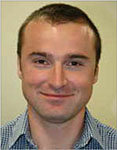
Guillaume Backé is a structural geologist with an expertise in seismic interpretation, three-dimensional structural and geomechanical modeling. He obtained a Master of Geophysics at the University of Toulouse III in France in June 2002, and completed a PhD at the University of Pau et des Pays de l’Adour in 2006. He very recently joined BP as a structural geologist in the Integrated Sub-surface and Description and Modelling team (ISDM), following a two-year Postdoctoral position in the Centre for Mineral Exploration Under Cover (CMXUC) and a three-year lecturing position at the Australian School of Petroleum of the University of Adelaide. Member: AAPG, PESA, AGU and EAGE.guillaume.backe@adelaide.edu.au |
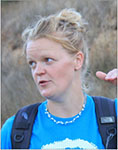
Rosalind King completed her BSc (hons) and PhD at the University of Liverpool in 2001 and 2005, respectively. Her PhD research studied the structural evolution of the Cape Fold Belt in South Africa. She worked as a post-doctoral researcher at the Australian School of Petroleum (University of Adelaide) from 2005–10, studying the present-day stresses of northwest Borneo and delta—deepwater fold-thrust belts. She is a lecturer at the School of Earth and Environmental Sciences (University of Adelaide) and her research includes the tectonics of deepwater fold-thrust belts, detachments, fold and thrust mechanics, and petroleum geomechanics. She serves as the president of the South Australian Branch of PESA. Member: GSL, AAPG, PESA. rosalind.king@adelaide.edu.au |
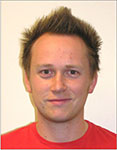
Simon Holford is an Australian Research Council post-doctoral fellow and lecturer at the Australian School of Petroleum. He is the deputy director of the Centre for Tectonics, Resources and Exploration (TRaX) at the University of Adelaide. He graduated with a BSc (hons) from Keele University (2001) and a PhD from the University of Birmingham (2006). His research interests are in the deformation, uplift and magmatic evolution of rifted margins, sedimentary basins, and continental interiors and their impact on hydrocarbon exploration. Member: AGU, ASEG, GSA, GSL, PESA. simon.holford@adelaide.edu.au |
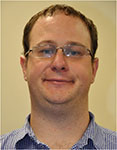
Mark Tingay is a senior lecturer at the Australian School of Petroleum, where he examines the petroleum geomechanics, overpressures and the tectonic evolution of sedimentary basins in Australia and southeast Asia. In particular, he specialises in studying the stresses in sedimentary basins and the mechanics of rock failure and fluid mobilisation in zones of very high pore pressure, including oil field blowouts and natural features, such as mud volcanoes. Mark graduated with a PhD in geophysics from the Australian School of Petroleum in 2003, worked at the World Stress Map Project in Germany from 2003–06, and has been a lecturer in petroleum geology and drilling engineering at the University of Adelaide and Curtin University since 2006. He has published more than 45 peer-reviewed papers, taught industry short courses on petroleum geomechanics to companies and for the American Association of Petroleum Geologists and Society of Petroleum Engineers, and routinely provides media interviews on geoscience and petroleum industry issues. mtingay@asp.adelaide.edu.au |
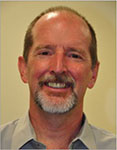
Dennis Cooke is the program manager for GeoFrac—the Australian School of Petroleum research program in unconventional resources. GeoFrac is bringing the ASP’s considerable experience in stress and geomechanics to problems involving fracture stimulation, stress, natural fractures, and brittleness. He joined the ASP in December 2010—specifically to start GeoFrac—following more than 20 years of experience in the oil and gas industry. His most recent experience includes 11 years as chief geophysicist for Santos. His industry experience includes research, seismic processing, exploration, development, and technical service. He has experienced exploration and development geoscience in Australia, Alaska, Indonesia, mid-continent USA, Gulf of Mexico, and the North Sea. He has published in the areas of seismic inversion, reservoir characterisation, and seismic migration. dennis.cooke@adelaide.edu.au |
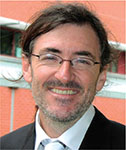
Martin Hand undertook a PhD at Melbourne University (1995) after completing an Honours degree at the University of Newcastle. His PhD work focused on the structural and metamorphic evolution of Proterozoic terrains in Antarctica and central Australia. Following his PhD, he was awarded an Australian Research Council Postdoctoral Fellowship (APD) at the University of Adelaide where he continued to investigate the thermal evolution of the continental crust. He was then awarded an Australian Research Council Research Fellowship (ARF). After being appointed as a lecturer in 2000 at the University of Adelaide, he formed the Continental Evolution Research Group (CERG) with colleagues. This group now has a number of project focuses, both in Australia and overseas and forms a unit in the Centre for Tectonics Resources and Exploration, of which he was formerly the director. More recently he has integrated his research interests with the emerging geothermal energy industry in SA, and is now the Director of the South Australian Centre for Geothermal Energy Research. martin.hand@adelaide.edu.au |


